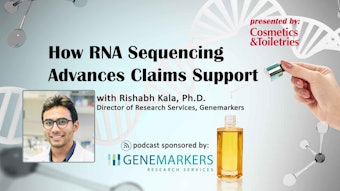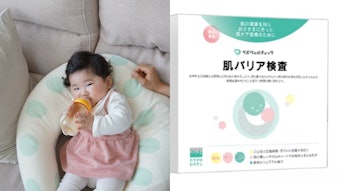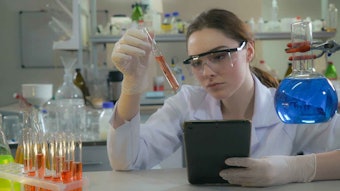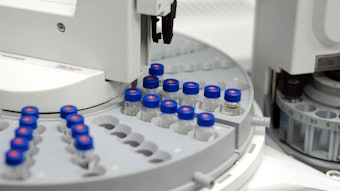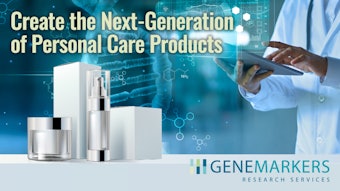It was my wife’s idea to write about nothing, but when the topic is nothing, there is nothing to argue about. At least that's what I thought, until I looked more closely at the topic of this column, the placebo.
Officially, the word placebo comes from Psalm 116, verse 9, where it is written in Latin, Placebo domino in regione vivorum, meaning “I will please the Lord in the land of the living,” or “I will walk before the Lord in the land of the living.” These words were the beginning of the congregation's response to the clergy during the prayer for the dead that was sung at funerals in the Middle Ages.
In France, food was provided for relatives after a funeral and it soon became customary for distant relatives and other, unrelated individuals to attend the ceremony; these individuals would simulate great anguish and grief in hopes of obtaining their share of food and drink. The latter practice was so widespread that these unrelated people were soon recognized as the personification of all things useless, and were considered to be archetypical simulators. Since the first collective act of these grief simulators was to chant "Placebo domino in regione vivorum," they were collectively labeled in French as either placebo singers or singers of placebo. They were so labeled because they sang the word "placebo," and not because they were "choral placaters," using their song to please.
The modern meaning of the word placebo has also been surrounded by lamentations. In 1939, the Italian physician Fieschi introduced a technique for patients with Angina pectoris where he blocked two internal mammary arteries so that more oxygen would become available to the heart. Dramatic improvements were seen: three quarters of the patients showed an improvement and one quarter of the patients were cured. Due to this success, this technique became the standard surgery practice for the next 20 years.
In 1956, American surgeon Leonard Cobb expressed doubts about this technique and thus studied its validity by performing two types of surgery. In a group of nine patients, he made the incisions but did not do anything more than that, whereas in a second group of eight patients, he performed the full Fieschi technique. The results were dramatic because similar improvements were seen in both groups.That was the end of the Fieschi technique and the beginning of the documented surgical placebo effect.
Since that time, every properly performed and valid clinical study must be placebo-controlled. In addition, it must be performed double-blind so that both the investigator and the subject do not know which treatment is administered, to eliminate any form of bias. This non-bias allows investigators to be completely sure about the true biological effects of a treatment, and it does not confuse the data by allowing a suggestive component to play any role.
Henry K. Beecher, in his 1955 paper “The Powerful Placebo,” attributed nearly 30% of overall therapeutic benefits to the placebo effect. Although the paper published in the Journal of the American Medical Association described medicinal research, in cosmetics, suggestion is definitely and deliberately a part of the equation.
Recently, I was called in as an expert witness for a case where the cosmetic effects of a product were measured. Bold claims were made that were fully justified by the data. It was argued that the study results were not valid because the test was performed on untreated skin instead of against placebo. Was this proper science or not? This is an impossible question.
The starting position for a clinical cosmetic efficacy trial is always the cosmetic claim that the cosmetic company wants to make. If they claim that the product is better at providing X than the leading product on the market, then they need to test it against that product and measure the development of X in both cases. If they claim that their active ingredient is causing X, as is often done by suppliers, then they should test it against the placebo so that the only difference between the active formulation and the placebo formulation is the active ingredient.
However, if the claim is that the complete formulation is causing X, then X should be tested with and without the use of the product for which the claim is made. In other words, it should be tested against nothing; or if the company wants to make things more difficult, it should be tested against the current usual routine of the volunteers (without defining or describing it). This is exactly what some companies do not understand. They think that every product should be tested against a placebo; i.e. the same formulation without the active ingredient, irrespective of the circumstances (read the claim). Understandable but wrong.
People insist on testing against a placebo, which raises another interesting issue: What should the tester do if there is no active ingredient in the formulation? Is everything active because the formulation has an effect? Is isopropyl myristate or mineral oil an active if it helps to moisturize the skin even though activity is not claimed? What do we do if an active is incorporated in an emollient that helps to moisturize the skin and in doing so, increases the skin penetration of this active? Has the emollient now become an active? One thing is clear: such a base without actives is not without efficacy, but what is the placebo? That base will definitely have a measurable placebo effect but the way in which the company defines its placebo (i.e., designs its test) depends on their claim and nothing else.
A similar situation happened to me when I submitted an article to an academic journal. I compared two formulations with different compositions and showed that the penetration from one vehicle was significantly better than from another by changing the polarity of the oil phase in which the active was incorporated. In addition to the skin penetration results, I was able to show that more clinical efficacy could be obtained by using less of the active ingredient. The claim that I made was that I could manipulate the clinical effect by changing the polarity of the emollients and reduce the dose without losing the clinical efficacy. I thought that this would have an impact in that journal, but it was rejected because, according to the reviewers, I should have tested it against a placebo.
What the reviewers failed to realize was that I was not claiming that my active was causing the effect (I had already done that in previous clinical trials), but that the clinical efficacy of an active is regulated by its formulation. When I clarified this to the reviewer, the answer was, “In proper research, everything is tested against a placebo.” I argued that I could not test it against a placebo because every formulation was different. Testing against a placebo is completely correct if you want to show that a drug or an active is responsible for the effect. But when testing whether or not a complete formulation is effective, testing against untreated skin should be conducted. Against nothing, rien, niente, niets, nichts, diddily squat.
As always, my wife is absolutely right. I do get upset about nothing. Is the difference between dermatology and cosmetics that cosmetic testing is really much ado about nothing? Placebo means to please, but who are we pleasing? Regulatory bodies, lawyers, scientists or our customers? Indeed, too much ado about nothing.
-Prof. Dr. Johann W. Wiechers
Technical Advisor, C&T magazine
Independent Consultant for Cosmetic Science
JW Solutions, Gasthuispolderweg 30 2807 LL Gouda, Netherlands
[email protected]


